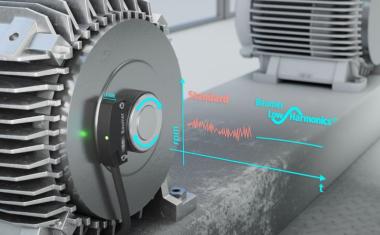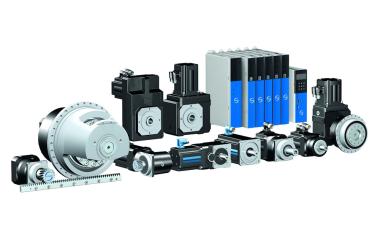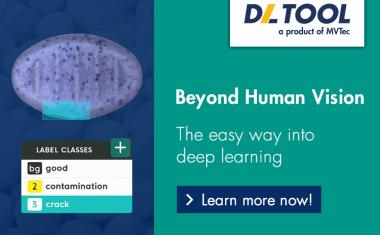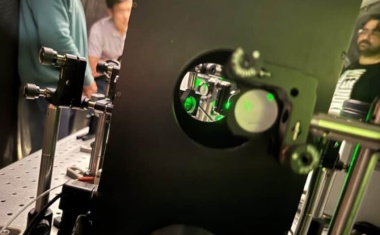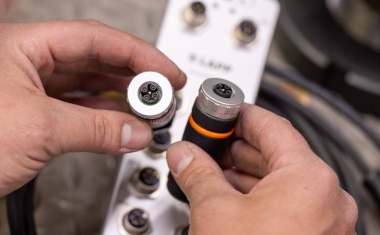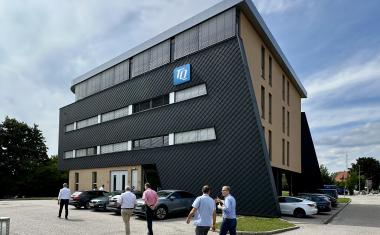Domino upconversion for UV-lasers
A solution for constructing miniaturized high energy lasers for bio-detection and photonic devices.
Strong and coherent ultraviolet light emission devices have enormous medical and industrial application potential, but generating ultraviolet light emission in an effective way has been challenging. Recently, a collaborative research team co-led by researchers from City University of Hong Kong (CityU) developed a new approach to generate deep-ultraviolet lasing through a domino upconversion process of nanoparticles using near-infrared light, which is commonly used in telecommunication devices. The findings provide a solution for constructing miniaturized high energy lasers for bio-detection and photonic devices.
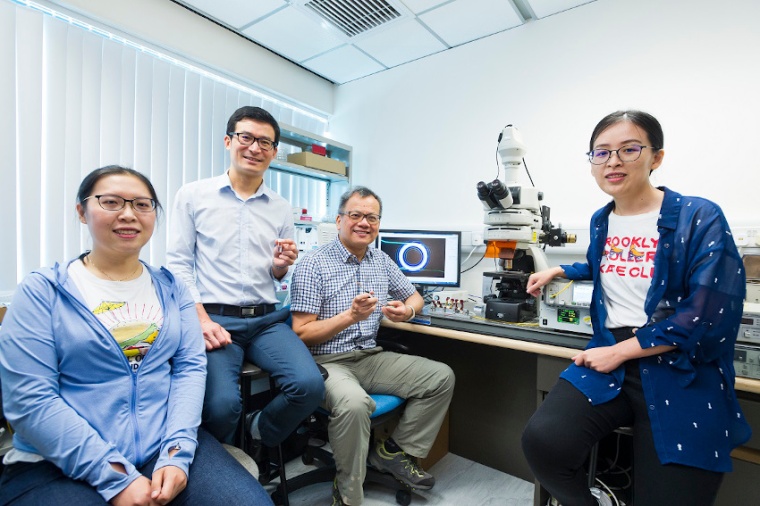
In the world of nanomaterials, photon upconversion means that when nanomaterial is excited by light or photons with a long wavelength and low energy, it emits light with a shorter wavelength and higher energy, such as ultraviolet light. Photon upconversion characterized by high-energy emission upon excitation of lower-energy photons is of exceptional interest among scientists. This is because it holds potential for cost-effective construction of miniaturised deep-ultraviolet emission devices, which have enormous medical and industrial application potential, such as microbial sterilisation and biomedical instrumentation. However, the photon upconversion process has limited flexibility, as it occurs mainly in special lanthanide ions comprising fixed sets of energy levels.
A research team co-led by Wang Feng, from Department of Materials Science and Engineering, and Chu Sai-tak from Department of Physics at CityU, together with Jin Limin from the Harbin Institute of Technology (Shenzhen), overcame the obstacle by introducing a domino upconversion tactic. Domino upconversion is like a chain reaction, in which energy amassed in one upconversion course triggers another succeeding upconversion process. By using a doughnut-shaped microresonator, incorporated with specially designed upconversion nanoparticles, the team successfully generated high-energy, deep-ultraviolet light emission at 290 nanometers by excitation of low-energy infrared photons at 1550 nanometers.
“As the excitation wavelength was in the telecommunication wavelength range, the nanoparticles can be readily used and integrated into existing fibre-optic communication and photonic circuits without complicated modification or adaptation,” said Wang. The idea of constructing domino upconversion was inspired by a previous study of energy transfer in core-shell nanoparticles by Wang and Chu. The core-shell structure design of the nanoparticle allows the multiphoton luminescence process in erbium (Er3+) ions. By adapting a similar synthetic protocol, the team successfully constructed core-shell-shell nanoparticles through a wet-chemistry method to explore the energy-transfer mechanism of lanthanide ions, including thulium (Tm3+) ions.
Through the careful design of doping composition and concentration in different layers or shells of the upconversion nanoparticles, the team successfully achieved a tandem combination of Er3+ and Tm3+ ions-based upconversion processes. The Er3+ ions contained in the outer shell responded to 1550 nanometers near-infrared photon excitation, a wavelength located in the telecommunication range. In the experiment, the team incorporated the nanoparticles into a doughnut-shaped microresonator cavity. Then they excited the nanoparticles with the 1550 nanometes near-infrared photons, and successfully generated a high-quality ultraviolet microlaser at 289 nanometers.
“The upconversion nanoparticles act as wavelength converters to multiply the energy of incident infrared photons,” explained Wang. He expects the findings to pave the way for the construction of miniaturized short-wavelength lasers and says they may inspire new ideas for designing photonic circuits. He added that the miniaturized ultraviolet laser using this domino upconversion technology can provide a platform for sensitive bio-detection, such as the detection of cancer cell secretion, by monitoring the lasing intensity and threshold, which offers great biomedical application potential in the future. (Source: CU Hong Kong)
Link: Dept. of Materials Science and Engineering, City University of Hong Kong, Hong Kong SAR, China




